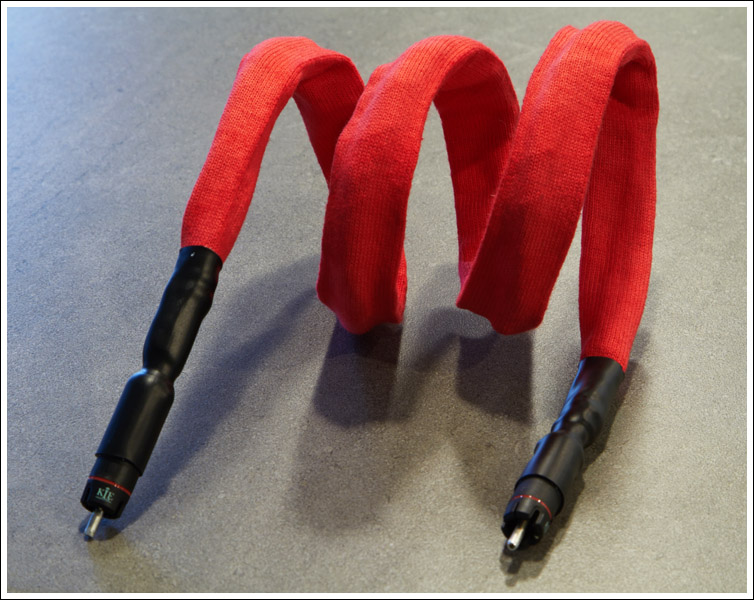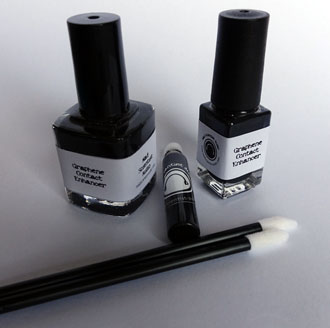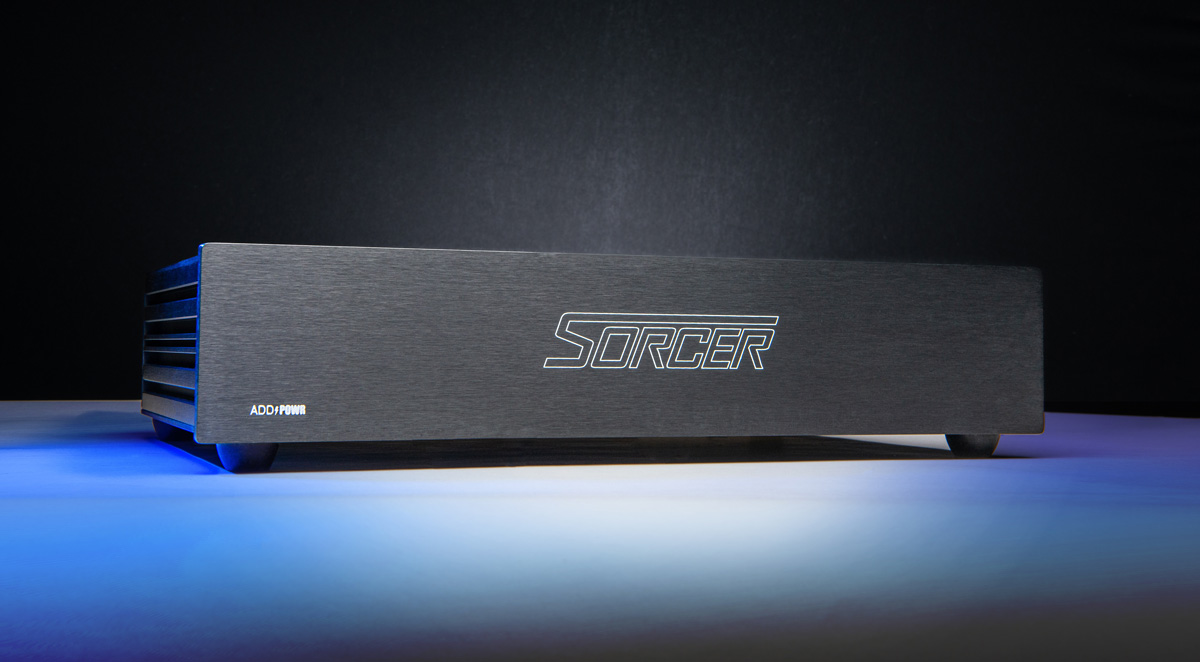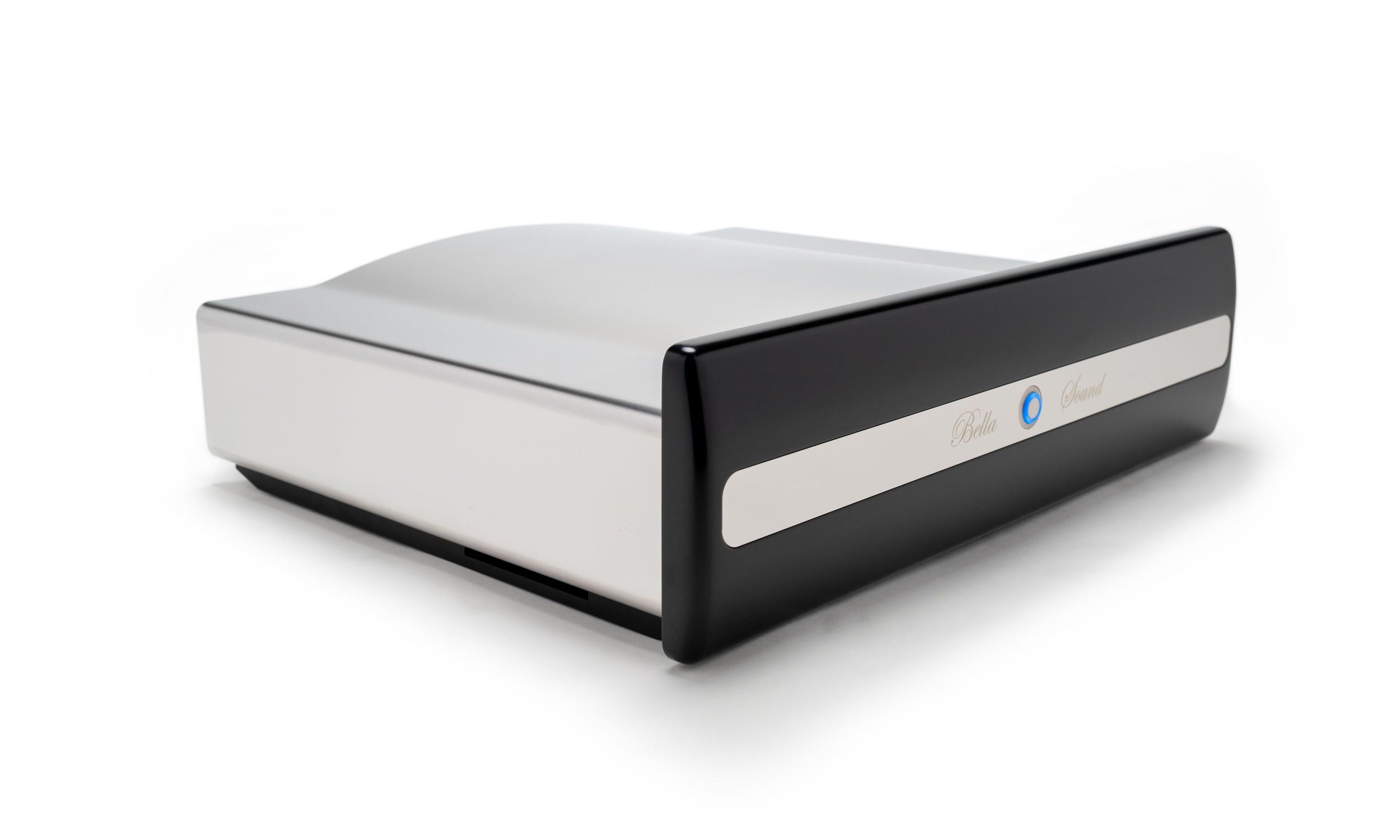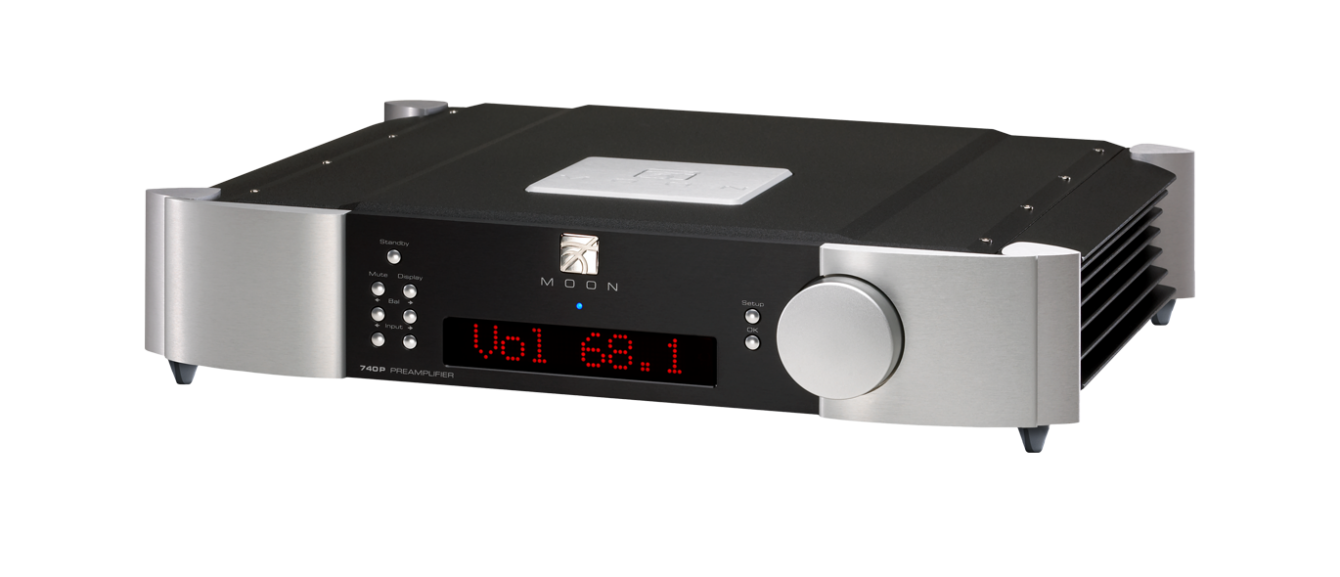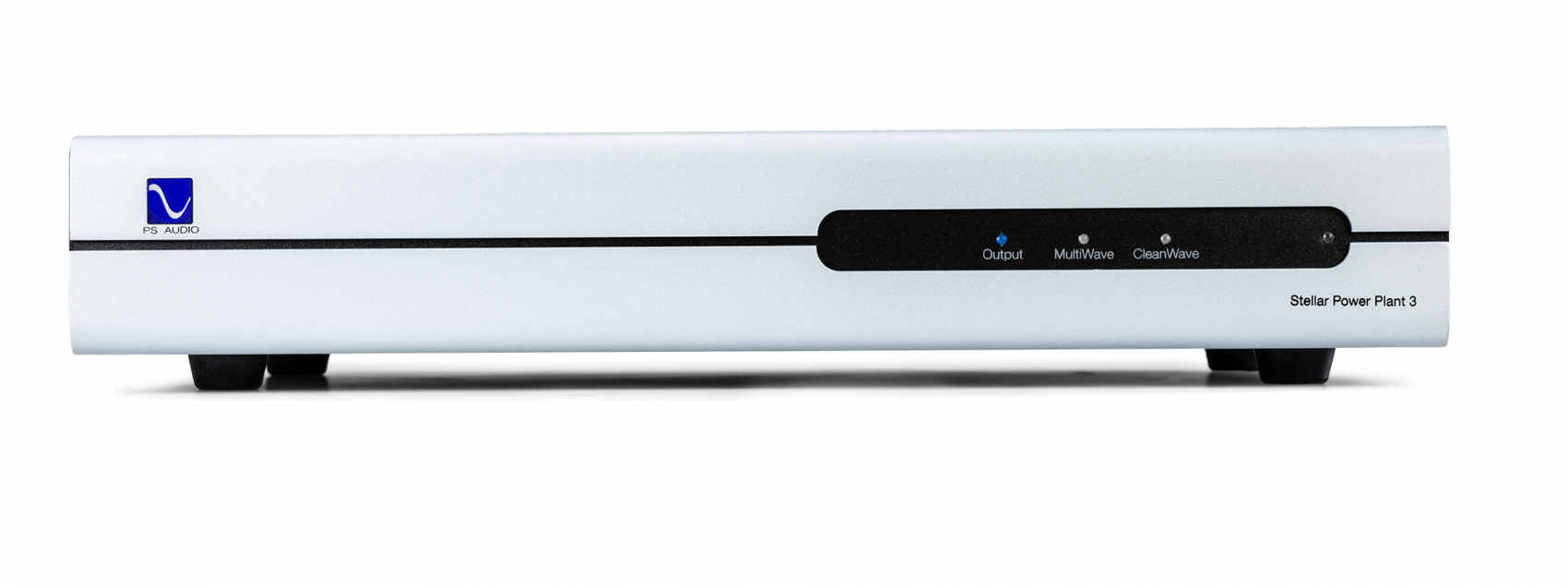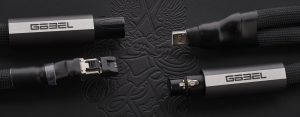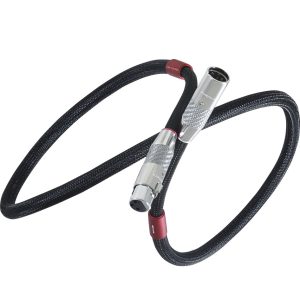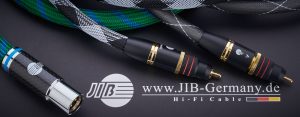The wind is in from Africa and last night I couldn't sleep. I laid there instead contemplating the review of the Mad Scientist Audio Flexible Carbon Fiber/Graphene balanced interconnects I was preparing. For those not familiar with Mad Scientist Audio, they came on the scene circa 2013, based out of New Zealand and run by Kay and Bob Prangnell. Their first product was a substance called Black Discus which when placed in close proximity to audio equipment subtly enhanced the sound. It was difficult to review a product of this type. The actual material is proprietary so the only description I could provide was a very subjective descriptions of how I thought it affected the sound of my system. In the review I mentioned that I took my samples to a friend's house and neither of us could hear the effect in his system. Thinking about that since then, I suspect that, tweaks being nuanced by nature, something else in his setup so overwhelmingly dominated the sound that it obliterated any enhancement provided by the Black Discus product.
Since that review, Bob and Kay have been madly working on expanding their product line which now includes power cords, interconnects, USB cables, contact enhancer, footers, tube toppers, and something called Magic Tubes. A year or so ago I was provided with samples of prototype power cords that integrated the Black Discus material into the construction of the cord. Although this material can be used in several locations outlined in the literature, proximity to the power supply and/or power cord is a popular choice so it makes some sense to integrate it into the cord itself and I felt that the prototypes worked as advertised.
This time around, in addition to the balanced interconnects under review here, the Mad Scientists sent along a sample of their graphene contact enhancer and a Heretical USB cable. (Also included was a bar of Whittaker's Fijian Ginger and Kerikeri Mandarin dark chocolate. Since I am not allowed to receive gratuities, I will be gratefully accepting this delicious donation on behalf of the Save The Raisin Foundation. Bless you for your generosity. We are a small privately funded organization and would also gratefully accept donations of New Zealand's South Island Single Malt or equivalent. Those in the US wishing to contribute may substitute Jack Daniel's.)
Tiny Dancer
Before approaching the main subject of this review, I'd like to talk briefly about the other samples included, starting with the Graphene contact enhancer. Graphene is a type of carbon consisting of one atom thick sheets. It is purported to be 200 times stronger than steel, and a better conductor than silver. This product also contains an oil-like chemical as the base, as well as corrosion inhibitors and dispersion enhancers. The idea behind all contact enhancers is to fill tiny voids in the surface of contacts to reduce resistance and noise. I have for years used a nano-silver product for this purpose.
According to the Mad Scientist website, one of the advantages of graphene over nano-silver is that its particles are 100 times smaller. Mad Scientist's product is available in 2ml, 5ml, and 10ml sizes and includes applicators. My first attempt at application got more of the enhancer on my hands than on the contacts and this was an issue throughout subsequent applications. Part of the problem lies with the container. It is a tiny bottle much taller than its diameter which tips over very easily and can be tricky in my big hands to hold and apply at the same time. Perhaps if I'd had three hands it would have been less of an issue. To be fair, the product literature does warn about this and hand sanitizer took the stuff right off.
In preparation for my recent review of Audiomica cables, US distributor Steve Klein of Sounds of Silence distributing and I were exchanging emails to set up the details of the review. In our first exchange Steve told me to send him a description of my system and he would cable it for me for the review. I'm sure he was thinking of a system consisting of an integrated amp, a couple of sources, and some mini-monitors. My system consists of six channels of amplification per stereo channel, separate active crossovers for each channel, and source components that don't sit between the speakers as in so many systems, thus requiring thirty-five-foot balanced interconnects from the preamp to the active crossovers. As I expected, Steve balked, telling me that the thirty-five-foot run alone would be about $16,000. Yes, yes, I know, I'm crazy but it sounds good. Remember the old racing adage, "There's no substitute for cubic inches".
I mention the above just to give the reader an idea of how many contacts were involved in the treating of my system with Mad Scientist Graphene contact enhancer. Troubleshooting a setup with as many contacts can be time consuming, so it is good insurance to provide the best connections possible. Additionally, a questionable contact will cause a flare in the electromagnetic field around the connection increasing noise pickup, and can also be hard to track down. Just going through a system disconnecting and reconnecting all contacts in and of itself will improve connectivity by wiping off any slight amount of corrosion which may have occurred. In my case, although it had been a while, I had already treated everything with nano-silver contact enhancer.
Could I hear the difference? Maybe a slight bit of increased clarity, very subtle, but I still think it is worth the trouble and, with the above caveats, I can recommend Mad Scientist Graphene contact enhancer for your system. Check it out.
A Stitch in Time
Years ago who would have thought that the lowly USB interface would evolve into one of the most popular digital audio conveyors? Though I still eye it with some suspicion, USB's ability to work beyond the S/PDIF limit of 24/192 makes it a player regardless of my initial wariness. The Mad Scientist Heretical USB cable uses a separately screened pair capable of ten times the USB 2.0 data rate and is said to achieve 90% of its sonic benefit through tuning of cable characteristics and shielding techniques. In their listening tests the Mad Scientists discovered that a length of two meters optimized cable capacitance and thus sound quality.
This cable provides good dynamics along with an excellent level of musical saturation and low coloration. Depending on your previous reference and system synergy, it provides a reasonable alternative at a reasonable, for high end cables, price. Check the website for the various configurations available.
Loopholes
Mad Scientist Audio claims nineteen different ingredients in the construction of their Flexible Carbon Fiber/Graphene balanced interconnects. Though cable reflections, an issue in high frequency digital cables, are not considered relevant for analog interconnects, in searching for answers to audible differences in cables the Mad Scientists speculate that RF reflections could fold back into analog audio frequencies and effect sound quality. Skin effect, also generally considered irrelevant at audio frequencies, is different for carbon fiber due to permittivity and resistance creating a skin depth that can be larger than the fiber bundle. Do these things account for differences in cable sound? The Mad Scientists think so.
Physically and visually the Flexible Carbon Fiber/Graphene cables in their balanced configuration are a bit unusual and might not be to everyone's taste. They have a rather loose-fitting cotton jacket and the XLR connectors seem to be missing their outer locking components, giving them a slightly unfinished look. This concerned me at first, as I didn't want a cable connection that could just fall out. Handling and installing these cables is also unusual in that they have a bendy, stiff quality that Mad Scientist assures us should not pose problems and, in use, they stayed in place and didn't create any issue.
Surfing the internet one day I came across a wiki about W.C. Fields. Though Fields had only a grade school education, he was an avid reader and kept an extensive personal library. A devout atheist, Fields once told someone who caught him reading the bible that he was "looking for loopholes". This was much how I felt when I initially installed the Flexible Carbon Fiber/Graphene balanced interconnects. On first listen I was unable to distinguish them from my usual cables, the Soundstring Gen II and was scratching my head trying to figure out what I would say about them.
Of course, I really like the Soundstring Gen II cables, so sounding like them isn't a bad thing, right? Maybe not, but it sure doesn't give me much to work with in writing this review. In my original review, I praised the Soundstring Gen II as having a full dimensional soundstage with excellent articulation, possessing well focused images and lacking in bloat. I also spoke of bass articulation, pitch definition, and inner detail as well as pace, rhythm and timing all of which I felt were well presented.
Ultimately, with extended listening, perhaps due to break-in, I did start to perceive differences from my reference cables. Listening to "Stronger Than Me" the first cut from Amy Winehouse's album Frank, you are presented with an intense, full, and powerful bass line later overlaid with what sounds like a synth bass that upon first listen will have you wondering if your speakers are distorting. It has an ominous growl. What the Mad Scientist cables brought forth in addition to the things already noted was a slight increase in tonal saturation that added depth and weight behind a vocal that just floated in a three dimensional soundstage.
Listening to "If I Were A Bell" from Relaxin' with the Miles Davis Quintet SACD, horn tone had a natural presence that put Miles in the room. The rhythm section was open, relaxed, and natural in a way that was neither too laid back nor drew undue attention away from the soloist. Overall, the cables allowed a nice holistic presentation. For the money, it would be hard to complain.
I listened to a lot of music over a couple of months and was never unhappy with the performance of these cables regardless of the music. They were honest and open with no overt flaws. Another example was "Start It Up" from Robben Ford and the Blue Line. I was able to hear into the studio and easily distinguish Ford's guitar effects, which seemed to carve out their own acoustic within the recording space almost separate from the rest of the group.
A Mad, Mad, Mad, Mad World
I would really love to visit New Zealand and if I did I'd make sure to stop by Mad Scientist Audio. They strike me as folks trying to see the world of audio with fresh eyes, probably looking for loopholes. There's nothing wrong with a new approach. Perspective is everything. Do check out their website.
Flexible Carbon/Graphene PLUS Balanced, 1 meter with Neutrik XLR
Retail: $999
Graphene Contact Enhancer 5ml bottle
Retail: $49
Heretical USB Cable 2 meters
Retail: $199
Mad Science Audio




